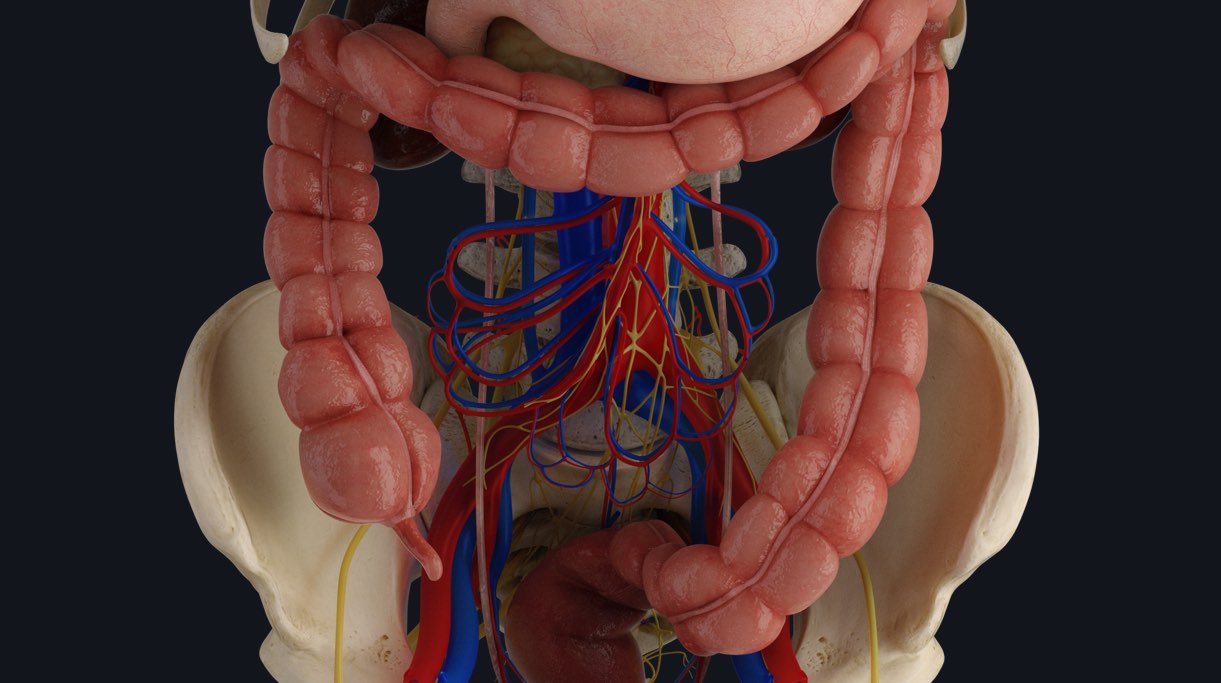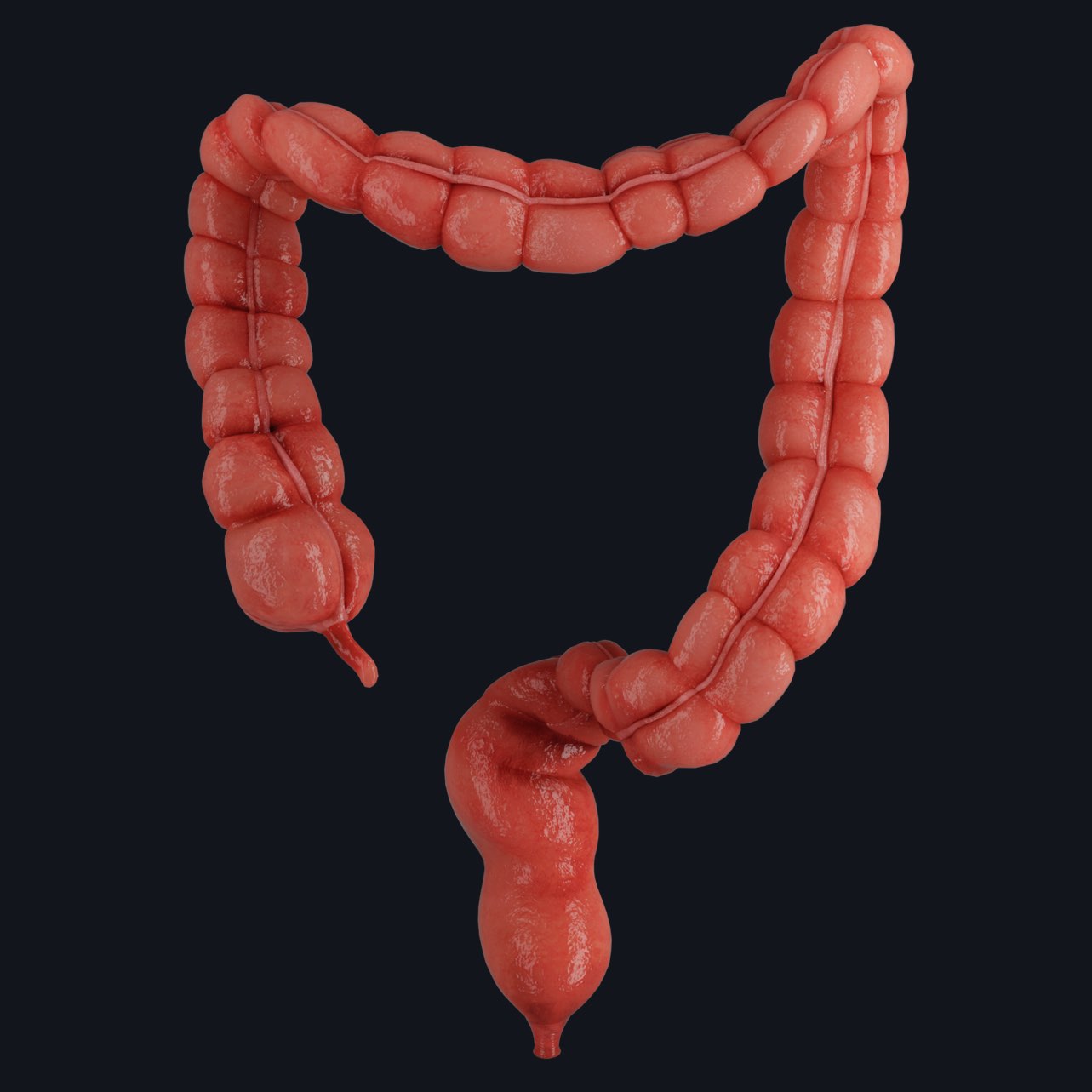
The large intestine also known as the bowel or colon is the most distal part of the digestive system. Within this tube-like organ, water is absorbed from the food we eat ? and the remaining waste material is stored as feces for a short while before being removed in a process known as defecation.

Here are 3 interesting facts about the large intestine:
It isn’t actually that long. at least when compared to the small intestine. The ‘large’ part of the name actually refers to its width and not its length. The large intestine is only approximately 5 feet long ? which is a quarter of the length of the small intestine at 20 feet long.
It’s an important source of hydration. The absorption of water by the large intestine not only helps to condense and solidify feces, but also allows the body to retain water to be used in other metabolic processes.
It provides nutrients. The colon provides an environment that is conducive for the growth of bacteria ?. In this environment, the gut flora aids in the synthesis of B complex vitamins and vitamin K, which perform different roles to nourish the human body and boost the immune system.
To date we’ve covered all major organs of the digestive system in our Anatomy Snippets. We hope you now have a better understanding of the complex journey of food through the body. Stay tuned for a SNEAK PEEK of our new large intestine microanatomy model, coming soon to Complete Anatomy.
Discover the world’s most advanced 3D anatomy learning platform. Try Complete Anatomy for FREE today.
